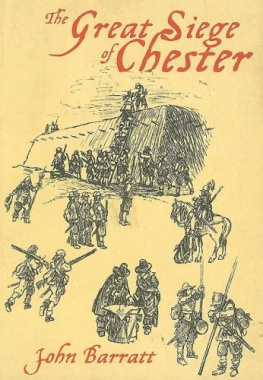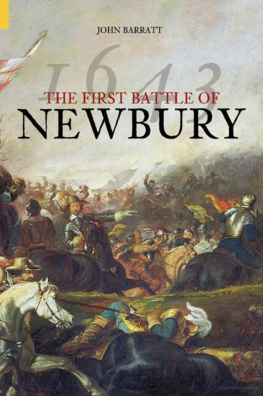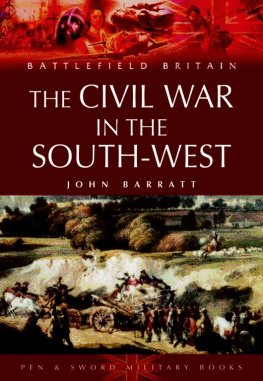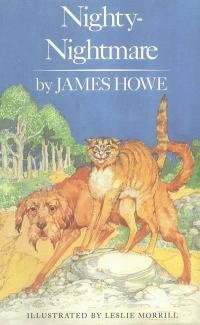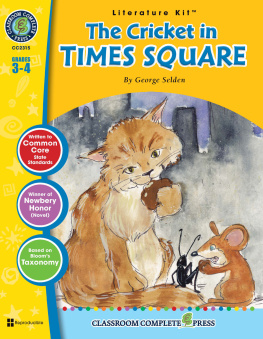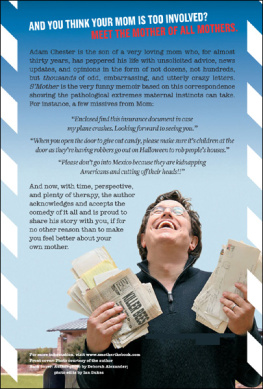The Great Siege
of Chester
The Great Siege
of Chester
John Barratt

First published in 2003 by Tempus Publishing Ltd
reprinted 2011
The History Press
The Mill, Brimscombe Port
Stroud, Gloucestershire, GL5 2QG
www.thehistorypress.co.uk
This ebook edition first published in 2013
All rights reserved
John Barratt, 2011, 2013
The right of John Barratt to be identified as the Author of this work has been asserted in accordance with the Copyrights, Designs and Patents Act 1988.
This ebook is copyright material and must not be copied, reproduced, transferred, distributed, leased, licensed or publicly performed or used in any way except as specifically permitted in writing by the publishers, as allowed under the terms and conditions under which it was purchased or as strictly permitted by applicable copyright law. Any unauthorised distribution or use of this text may be a direct infringement of the authors and publishers rights, and those responsible may be liable in law accordingly.
EPUB ISBN 978 0 7524 9633 7
Original typesetting by The History Press
CONTENTS
ILLUSTRATION LIST
Illustrations courtesy of John Barratt unless otherwise stated.
COLOUR PLATES
| The fourteenth-century Abbey Gateway. |
| View eastwards along the northern section of the city walls. |
| The Dee Bridge. |
| Bridge Street, house of the Cowper family. |
| The Old Kings Head. |
| View of the Parliamentarian siegeworks from the Welsh side of the Dee. |
| Gods Providence House. |
| The Bear and Billet, Lower Bridge Street. |
| The High Cross. |
| Memorial window. |
| Foregate Street. |
| Women and children. |
| Kaleyards Postern. |
| Newgate. |
| Site of the Parliamentarian bridge of boats. |
| Artillery position. |
| The Phoenix Tower. |
| The breach. |
| Parliamentarian battery position. |
| Barnabys Tower. |
| Dee Bridge and Bridgegate from Handbridge. |
| Tower of Chester Cathedral. |
| The city walls in the vicinity of the Goblin Tower. |
| Traces of embankments at Abbey Green. |
| Walls near Morgans Mount. |
| Pembertons Parlour. |
| The New Tower. |
| The city walls near Pembertons Parlour. |
| Eastgate Street. |
| Watergate Street. |
| Fort Royal site. |
| Remains of Parliamentarian mount. |
MAPS
CHRONOLOGY
1639
1640
Second Bishops War. |
18 September | Order for repairs to Chester defences. Francis Gamull made captain of city Trained Band. |
1641
October | Outbreak of rebellion in Ireland. |
1642
4 January | King fails in attempt to arrest five leading opponents in Parliament. Civil War becomes inevitable. |
8 August | Sir William Brereton expelled from Chester after attempting to recruit for Parliament. |
22 August | King raises standard at Nottingham. Official start of Civil War. |
6 September | Chester assembly orders further repairs to defences. |
2328 September | King Charles I in Chester, secures election of pro-Royalist William Ince as mayor. |
23 October | Battle of Edgehill; marginal Royalist victory. |
1643
3 February | Order by Chester assembly for levying of 500 for construction of outworks to protect suburbs. |
13 March | Cheshire Royalists defeated at Middlewich. Sir Nicholas Byron appointed governor of Chester. |
1821 July | First attack on Chester by Sir William Brereton repulsed. |
16 September | Cessation signed between King and Irish Confederates. |
7 November | Brereton takes Holt Bridge then occupies north-east Wales. Lord John Byron appointed Field Marshal General of North Wales and those Parts. |
21 November | English troops from Ireland land at Mostyn. Brereton retreats across Dee. |
4 December | Hawarden Castle surrenders to Royalists. |
12 December | Byron begins Nantwich campaign. |
13 December | Royalists surprise Beeston Castle. |
24 December | Bartholmley Massacre. |
26 December | Royalists defeat Brereton at Middlewich. |
1644
6 January | Prince Rupert appointed captain-general of Wales and the Marches. |
18 January | Royalist assault on Nantwich repulsed |
25 January | Battle of Nantwich: Fairfax defeats Byron. |
11 March | Prince Rupert visits Chester and orders alterations to defences. Gamull fails in bid to become governor. |
18 May | Rupert and Byron begin Lancashire campaign. |
19 May | William Legge appointed governor of Chester. |
11 June | Rupert takes Liverpool. |
2 July | Royalists defeated at battle of Marston Moor. |
21 August | Colonel John Marrow defeated and mortally wounded at Tarvin. |
18 September | Byron defeated at Montgomery. |
October | Brereton begins to close in around Chester. |
1 November | Parliamentarians take Liverpool. |
December | Leaguer of Chester begins. |
1645
18 January | Royalist defeat at Chrisleton. |
January/February | Lord Byron becomes governor of Chester. |
19 February | Prince Maurice relieves Chester. |
22 February | Parliamentarians surprise Shrewsbury. |
13 March | Maurice leaves Chester. Siege resumed. |
15 March | Rupert and Maurice relieve Chester and Beeston. |
16 May | Leaguer again raised by Brereton on approach of Royalist Oxford Army. |
14 June | Oxford Army defeated at Naseby. |
28 July | Leaguer of Beeston Castle resumed. |
Next page
